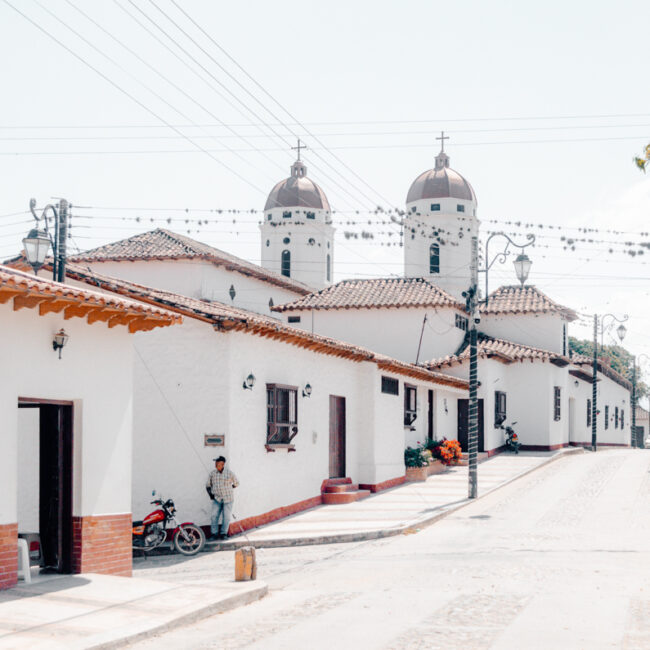

Ever wondered what slow tourism is and what slow travel is all about? Regardless of what you are maybe thinking, it has nothing to do with traveling at a snail’s pace. Slow tourism, as a concept, is the counterpart of mass tourism. It’s about skipping fast bucket list travel and opt for a more authentic travel experience focused on meaningfulness and intentionalism. In this post, I will explain to you what slow tourism is and how you can become a slow traveler yourself if you would like to!
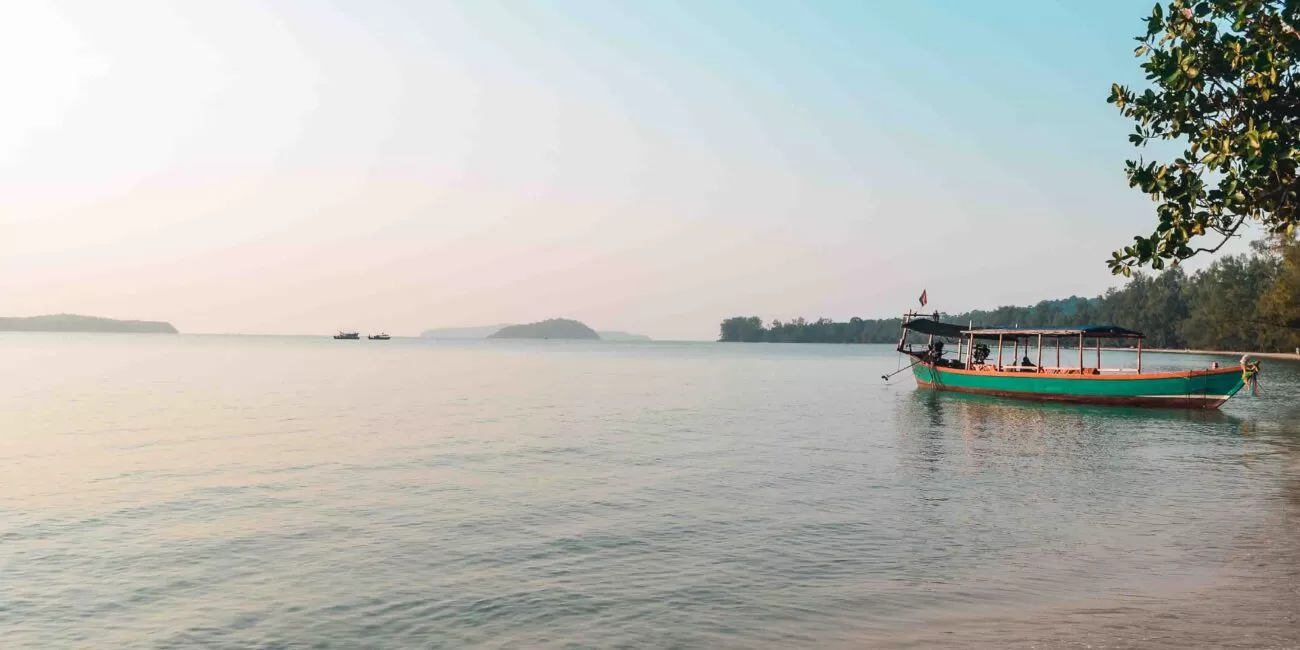
Slow tourism @ Koh Ta Kiev, one of the lesser known islands on the coast of Cambodia.
Slow tourism is about taking your time to travel at a relaxed and comfortable pace. In contrast to fast tourism, it’s about combatting travel fatigue and immersing yourself locally to have a more meaningful experience.
Moreover, slow tourism focuses on making personal connections with locals at your destination. This way you get personal first-hand information about the place you are visiting instead of the general tourist information provided by foreign tour operators. Through slow travel, you get to explore the new surroundings through a local’s eye, plunge into the culture and connect with local communities.
As a result, traveling slowly also makes you travel more sustainably. Slow travelers, in general, tend to be more attracted to consume locally, by staying in local accommodation and eat at local restaurants. This benefits the local economy and prevents tourism leakage. Because of this, your travels don’t just improve your wellbeing but it’s also beneficial for the destination.
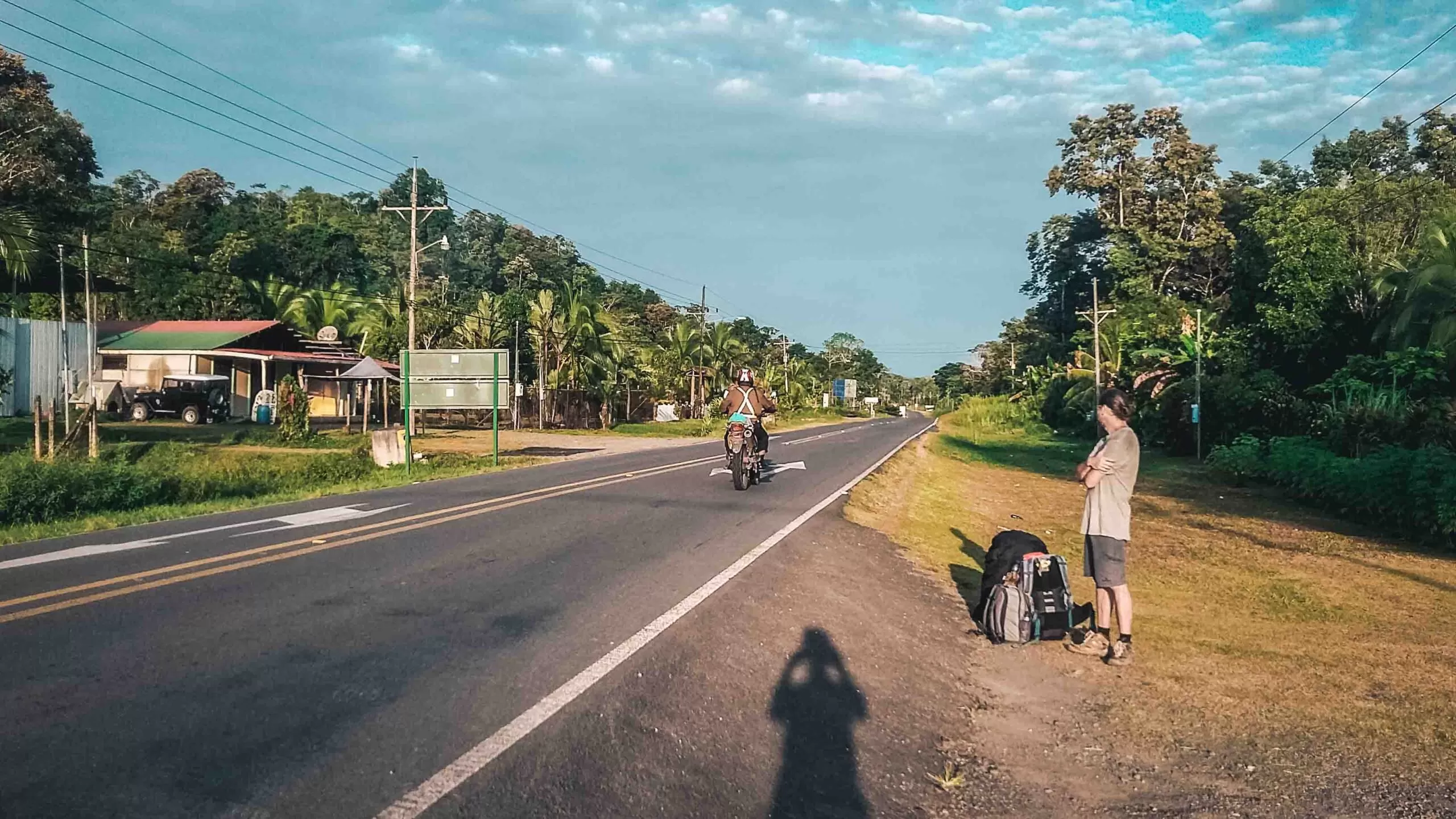
Being slow tourists in Costa Rica, waiting for the local bus.
Not much research has been conducted yet in the area of slow tourism. While at the start of the slow travel movement, the main focus point of slow tourism was the mode of transportation, this shifted later on to a broader definition of slow tourism, taking into account two driving forces regarding travel, environmental sustainability and personal/social well-being (Moore 2012).
Dickinson and Lumsdon (2010) define slow tourism as: “a conceptual framework that involves people who ‘travel to destinations more slowly overland, stay longer and travel less’ and who incorporate travel to a destination as itself an experience and, once at the destination, engage with local transport options and ‘slow food and beverage,’ take time to explore local history and culture, and support the environment”.
Of course, I’m not a researcher but I will try to build on this definition and my own travel experience to give you a better understanding of what it can mean to be a slow traveler.
Slow tourism is an offshoot of the slow food movement which originated in the 1980s in Italy. Carlo Petrini and a few other demonstrators protested against the opening of a McDonalds at the Spanish steps in Rome, denouncing that the arrival of fast food establishments would harm regional cuisine and Italian culture in general..
We believe that we can add meaning to life by making things go faster. We have an idea that life is short - and that we must go fast to fit everything in. But life is long. The problem is that we don't know how to spend our time wisely.
Carlo Petrini
What started as the slow food movement quickly expanded to other areas such as fashion, photography, journalism, and of course, travel.
In 1999, Cittaslow was founded in Italy, which was the start of the slow travel movement. Cittaslow aims to boost the quality of life in towns by taking a slow approach regarding food, culture and space. Many towns in Europe have already become a member of this movement and more and more slow cities are also popping up in Asia and Latin America.
Although slow travel has been done for hundreds of years, the emergence of Cittaslow led to slow travel as a concept and more recently to a slow travel trend.
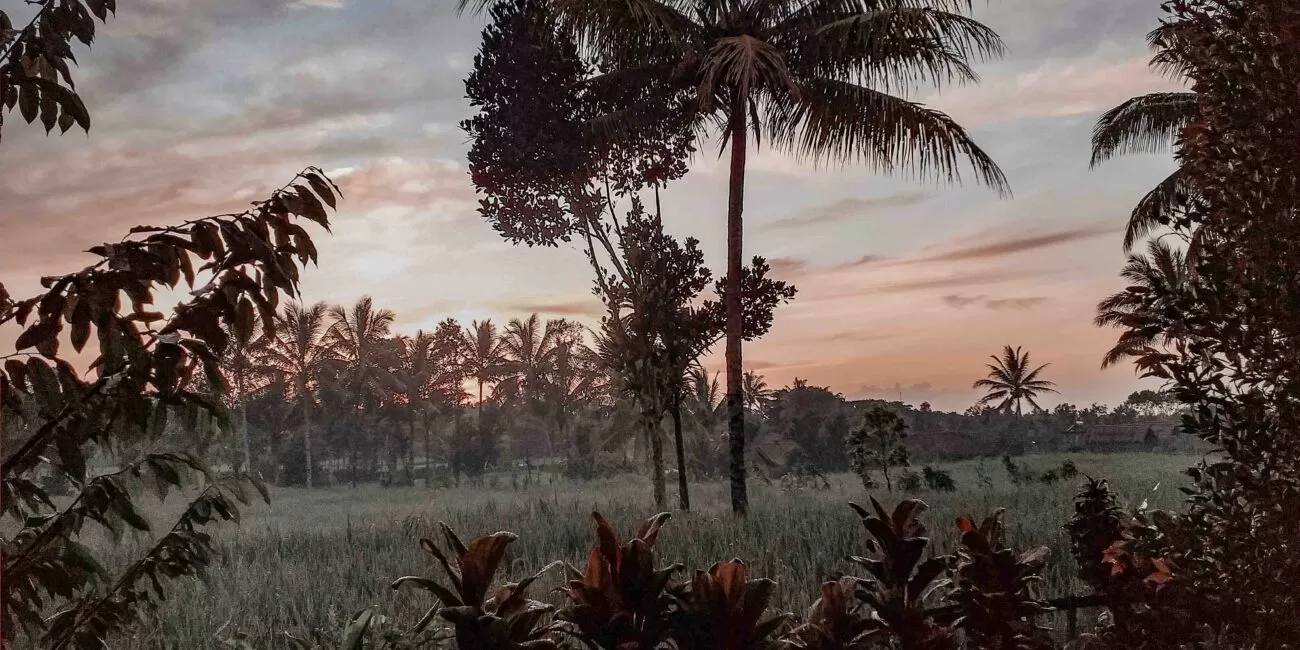
Slow tourism in Indonesia: watching the sun rise in Tetebatu, Lombok.
As said before, this by no means implies traveling at a snail’s pace. Traveling at slow speed, in the context of slow tourism, means pacing yourself to a tempo you feel comfortable and at ease with. It is about not stressing to see all the highlights of one country in five days but consciously choosing to slow down, knowing that by doing this you will see and experience more than you ever would on your crammed five-day itinerary. It allows you to return from a trip feeling energized instead of suffering from travel fatigue.
While slow tourism doesn’t really focus on specific modes of transport it is obvious that taking an organized tour by bus or boat with a bunch of other tourists is the complete opposite of slow travel. Slow travelers will most likely choose local transport options at their destination like buses and subways or just walk.
They often also prefer a low impact way of travel like bike travel, a train journey or a road trip by car with friends. In these cases, travel isn’t that much about reaching a destination but more about the journey itself.
Some people wonder about how long they should stay in one destination to be considered a “slow traveler”. I don’t think you can pin it down to a specific amount of days or weeks.
Because slow travel is more of a mindset than anything else, it is about how you behave at a destination rather than how long you are actually staying.
That said, in my experience, it’s about staying as long as you feel you need or want to be there. As a slow traveler, you probably have certain aspirations, goals or reasons to travel to a certain destination. And instead of rushing, you will want to explore your destination thoroughly. And to explore thoroughly, you need time.
It is needless to say, that you cannot get to know a city in one day or a country in one week. Stay longer in one location. You will notice you will get a hang of a location if you develop certain preferences like a favorite beach or a number one coffee shop.
Slow and conscious travelers like to see a destination through a local’s eye so they generally like to stay and eat in locally owned places that are mainly off the tourist trail.
Homestays and small Airbnb’s are good choices if you want to travel as locally as possible. You can find a large array of homestays and BnBs on Booking.com. Another great site to look for local accommodation is homestay.com.
If you feel like you would rather have a whole place to yourself to slow down then you can rent out a whole apartment or villa on Vrbo or Airbnb. This option is great because it enables you to cook a meal yourself. One of the joys of traveling slowly is to visit local markets and savor local ingrediënts to cook up a dish yourself in the evening.
On the other hand, eating out is one of the best ways to get in touch with local culture. In this case, choose local coffee shops and locally-owned restaurants that use fresh ingredients and source their produce from local farmers. Avoid chain restaurants like McDonald’s, Burger King, and Starbucks. To have an even more in-depth experience you can connect with locals through Eatwith and join them for dinner in their homes.
Staying local and eating local are great ways to make local connections. They can give you tips on what to do and where to go to have a truly local experience. Furthermore, taking a local tour can also take you to more off-the-beaten-path places. Withlocals is a great website for intimate private tours. Meetup, on the other hand, is another great platform to connect with locals through events based on shared interests.
Other interesting options to immerse yourself locally are to do a home exchange or become a house sitter.
Slow travelers prefer value over volume. They feel no need to tick off a bucket list of touristy places in a small amount of time to create the perfect Instagram feed. They don’t like to rush but instead take things slow and will pick a few activities based on their own interests and values.
Often they want to be more than just passive spectators and seek active participation in local life by joining cooking classes, take handicraft workshops or a local dance class.
The definition of quality in this context is completely subjective although slow travelers will likely choose activities that are local and eco-friendly and educate them in one way or another so that it broadens their world views.
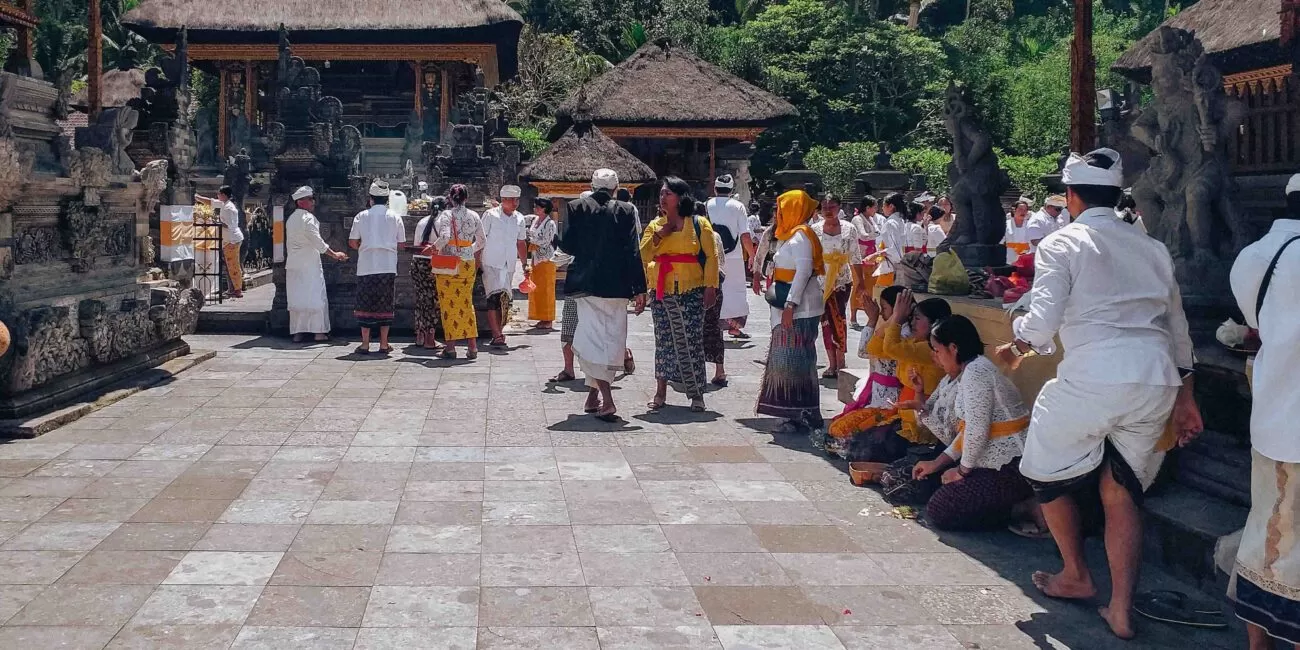
Slow tourism in Bali: slow travelers will immerse themselves in Balinese Hinduism.
Instead of ticking off all the bucket list boxes to popular places, slow tourism focuses on having meaningful, authentic travel experiences. If you like the fast-paced lifestyle, that’s fine. But if you feel like you seek deeper connections in your life and while traveling, then slow travel will most certainly help you achieve that.
By connecting with local places for a longer period of time, you learn about the culture, customs and habits. You get to really feel the place in a genuine way and who knows, make friends for life.
In contrast to mass tourism, slow tourism is better for the environment.. By spending your money in local restaurants, accommodation and markets your money funnels back into the local community. It benefits the locals instead of tourism chains and creates a more sustainable way of tourism by preventing tourism leakage.
Furthermore, by choosing more eco-friendly ways of transport, you reduce your carbon footprint. Taking the train, bus, car or bike instead of planes or cruise ships decreases your footprint drastically and helps mother nature to survive in this fast-changing world.
Traveling slowly allows you to break free from your daily habits and lifestyle. It lets you dive deep into a new culture and another way of living. It allows you to look at things differently and creates another angle that opens up your eyes to new ideas, possibilities and beliefs. Things you probably wouldn’t have thought of if you stayed at home.
Travel can turn into a life-changing experience. By seeking new adventures and focusing on self-reflection, one can achieve personal transformation and growth.
The traveler has to knock at every alien door to come to his own,and one has to wander through all the outer worlds to reach the innermost shrine at the end.
Rabindranath Tagore
Ultimately, slow travel can leave a positive long-term impact on you in many ways. You can find your purpose or passion in life through a travel experience or learn to let go of something painful that happened in your past allowing you to grow past former socially constructed ideas and beliefs.
Instead of rushing off to see every landmark or partake in a dozen of attractions, slow travel allows you to experience a place at a relaxed pace. It combats travel fatigue leaving you energized when you return home with new meaningful insights and valuable travel experiences.
If you have no fixed day-to-day itinerary and instead take the day as it comes, you will feel the stress from daily life melt away. Of course, you can have a list of things you want to do at a certain destination, but take it day by day. See what you feel like in the morning or decide the evening before if that helps you sleep better.
Slow tourism is better for your wallet. Staying in local accommodation away from the most touristy places will be cheaper, same as for eating out. Yes, it is tempting to dine out at a seaview restaurant but a lot of times you end up in tourist traps paying a lot more than you should.
Staying longer in one place will save you transport costs and you often get deals on accommodation if you stay longer than a week or a month. Airbnb gives discounts if you stay longer than a week and also provides monthly rates which are a lot cheaper than the daily rates.
Since slow tourism is about mindfully choosing the activities you partake in and allowing time to take things slow you will less likely spend money on heavily commercialized must-do activities which in general are pretty costly.
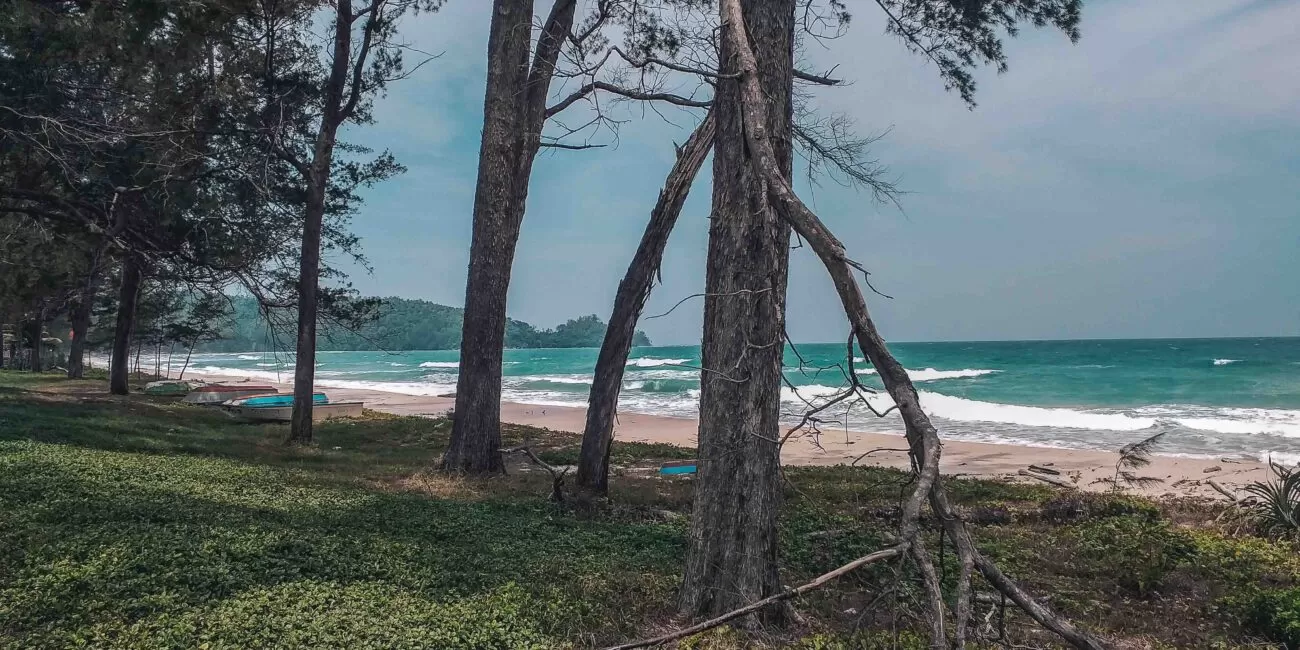
Slow tourism: Tourist-free beaches that go on for miles in Kudat, Borneo, Malaysia
Have the things you’ve read so far inspired you to slow travel but don’t know where to start? While there are no strict rules regarding slow travel, here are some tips that might help you get started:
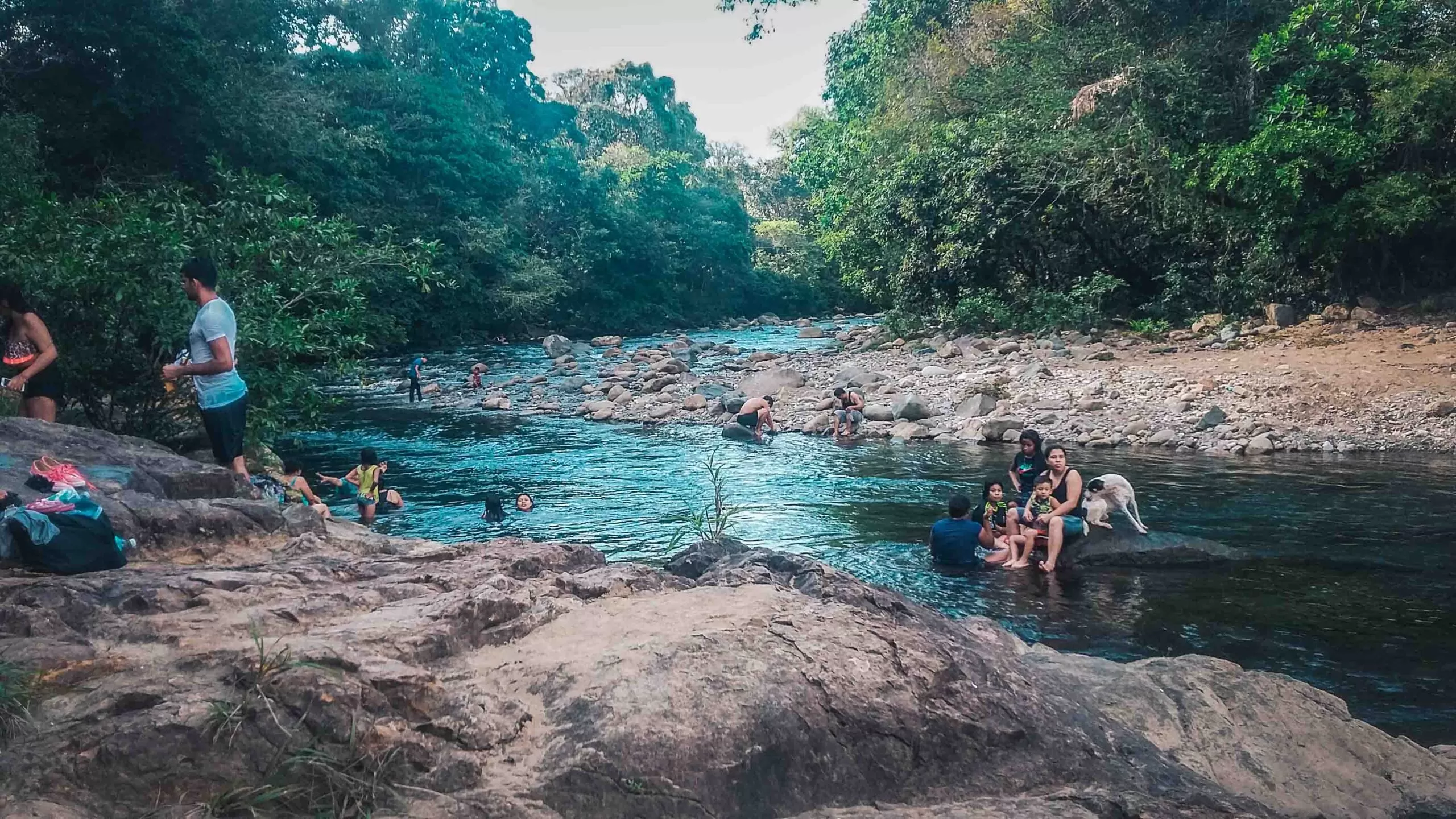
Slow Tourism: Live like the locals in Santa Fé, Panama.
Slow tourism is possible on all continents and in every country. Because slow travel is more of a mindset than a destination it really depends on what you want to get out of it. Here are some tips though, to let you get started:
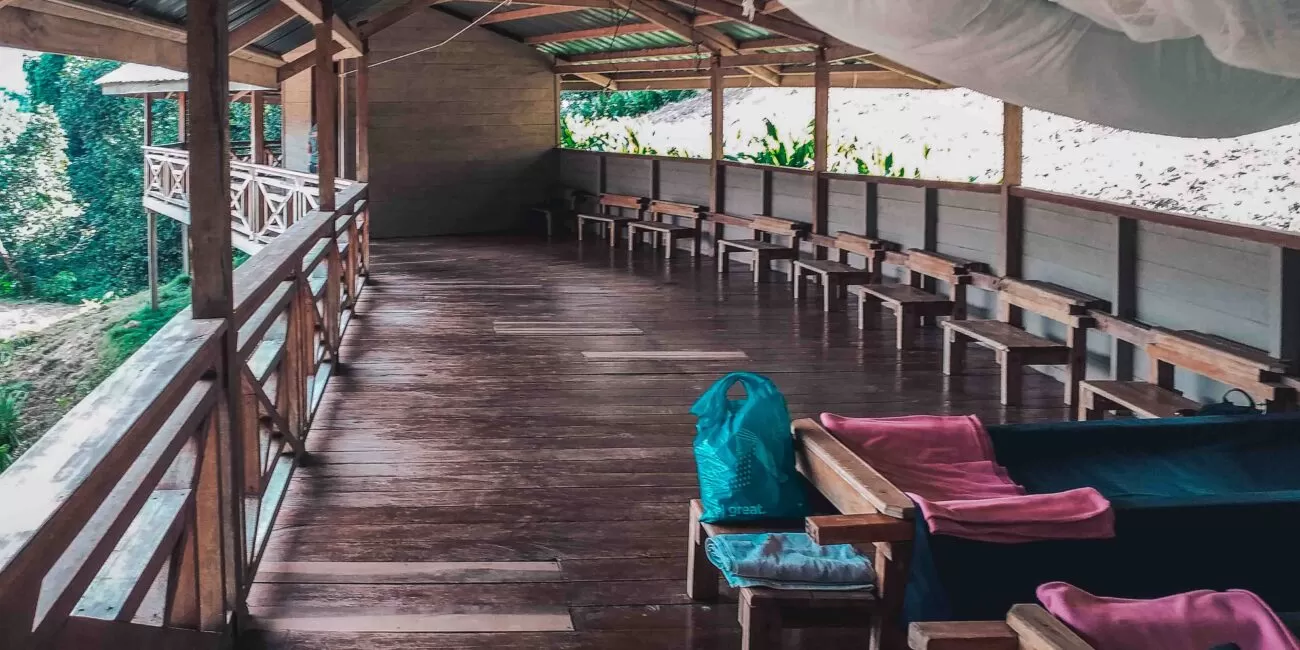
Slow tourism tours: sustainable community-based tours in Orou Sapulot, Malaysia.
Recently tour agencies have emerged focusing on the principles of slow tourism. They have put together tours that consist of visiting lesser-known destinations, staying and eating locally and mostly a slow mode of transport. While I’m personally not that interested in taking tours like this (I want to travel at my own slow pace), maybe this is your ideal way to discover what slow tourism is all about. Slowtours is the go-to organization for booking slow tourism tours. Responsible travel also has a small selection of responsible slow tours.
Although I’m not a big fan of tours that last multiple days, I do appreciate short slow tourism tours that take you to places that are offbeat and hard to get to without a tour. I had a great experience visiting the Sapulot Region in Borneo with the Orou Sapulot Community Based Eco-Tourism Project.
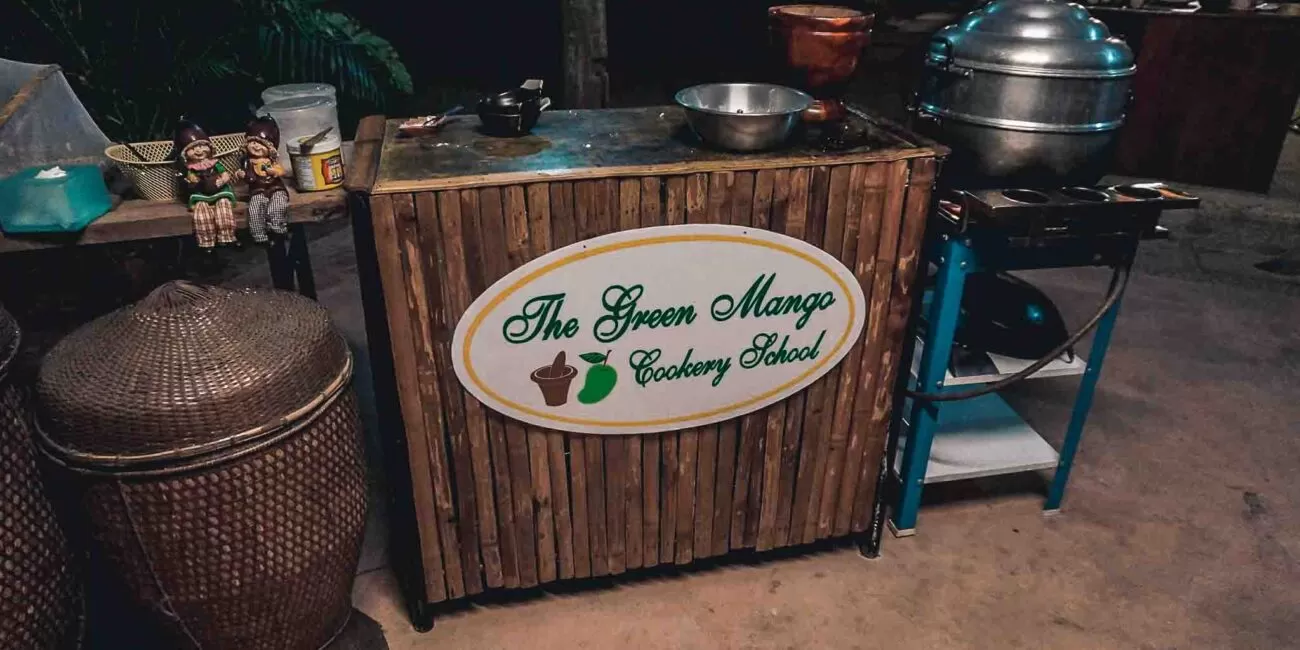
Slow tourism: taking a local cooking class in Chiang Mai, Thailand.
The slow movement started with slow food and this is one of the best ways to get to know a country and the local culture. Mouth-watering local recipes that have been passed on for centuries are yours to discover all around the world. Whether it’s a Cambodian Amok, Spanish tapas or Bolivian saltenas, every dish has its unique story characterized by the regional herbs and flavors.
Taking a local cooking class is a fun slow travel activity to partake in and educates you about the local food culture. Even if you’re eating plant-based like me, there are cooking classes to be found all around the world. If you can’t find one specifically catering to vegetarians and vegans, just contact a regular one and I’m sure something can be arranged.
Slow tourism is certainly not for everyone but I’m wondering if this post inspired you to take the first step to travel more slowly. Please let me know in the comments below or drop me a message through my contact page!
Also, check out my resources page to learn about my favorite travel companies, and have a look at my travel gear to pack your luggage or backpack more sustainable!
ENJOY!
Disclaimer: This post may include affiliate links. If you click on them, I may receive a commission at no extra cost to you.
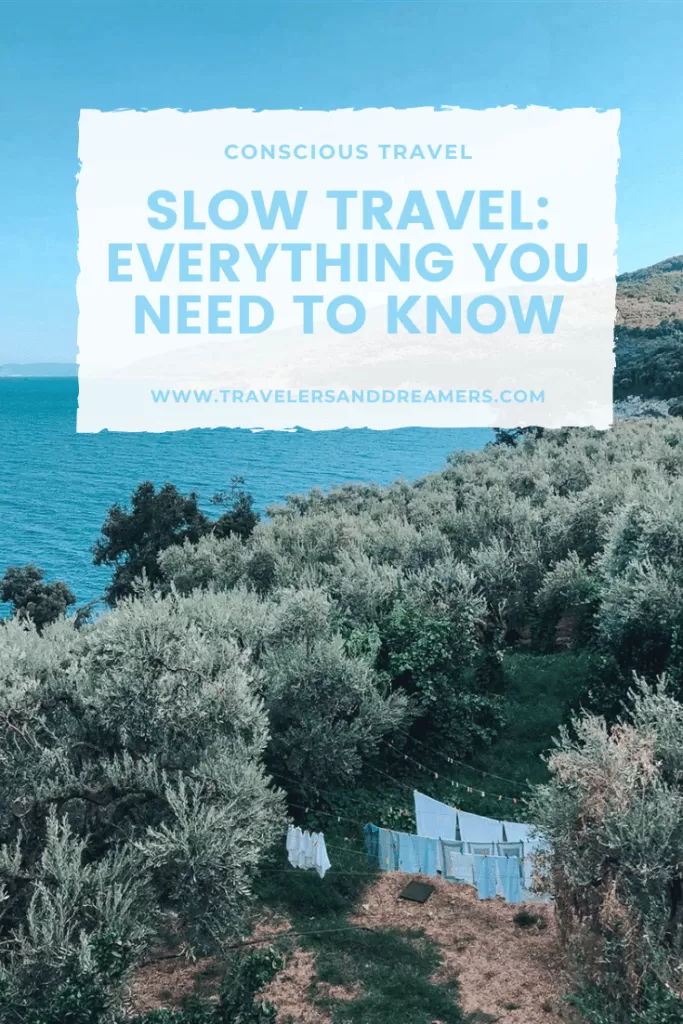
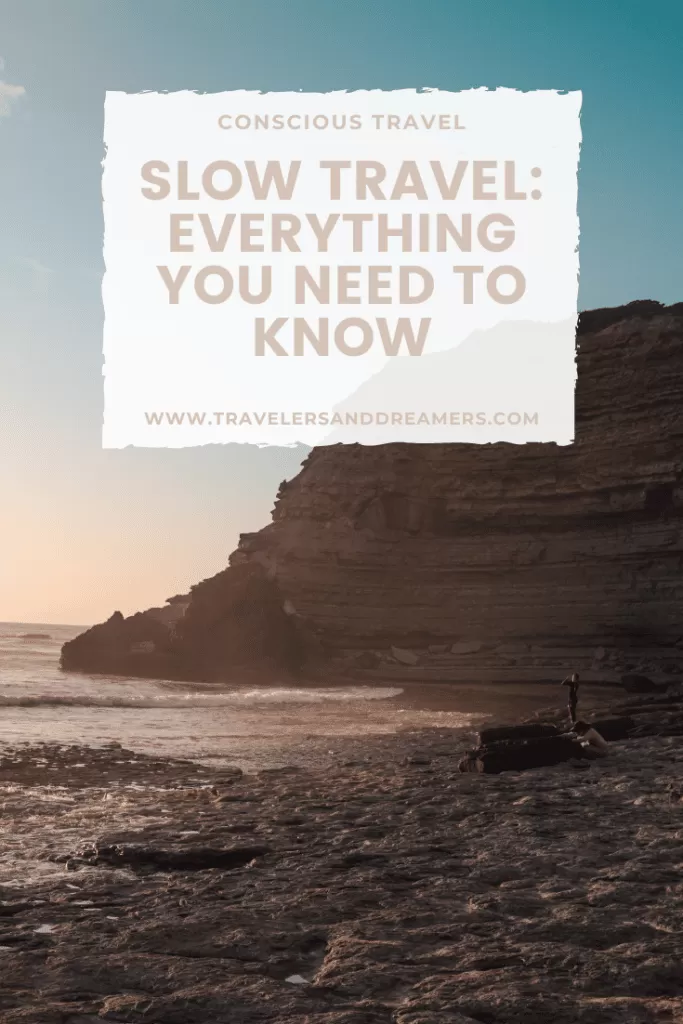
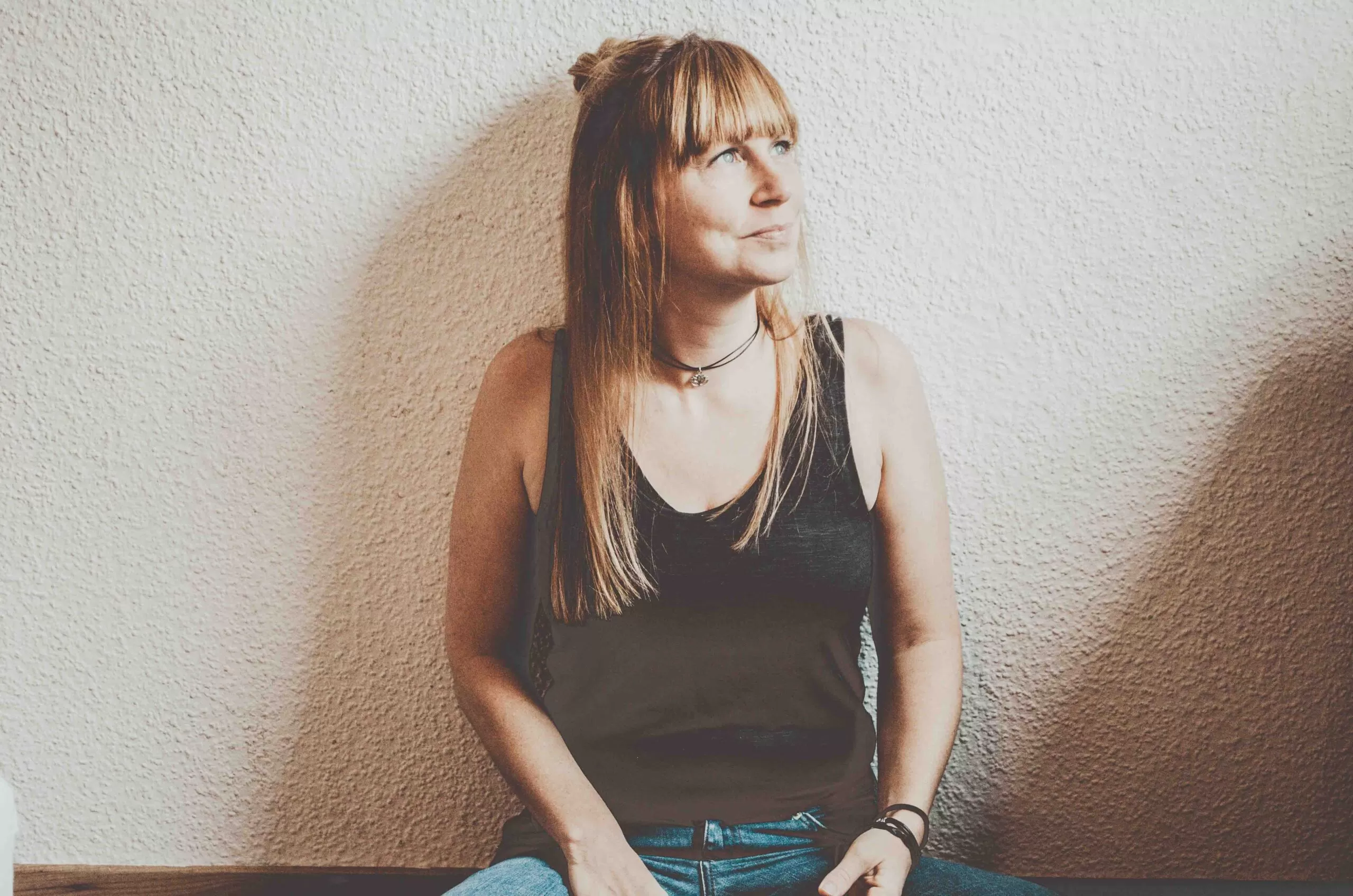
Hi! I am Annelies and this is Travelers & Dreamers, a blog about conscious travel which means traveling in a more mindful way, with a positive impact on the world and yourself!
On this website, I cover different topics like slow travel, plant-based food guides, responsible travel, sustainable packing, eco-travel, and more!
Latest Posts

La Playa de Belen, Colombia: An Easy Travel guide!
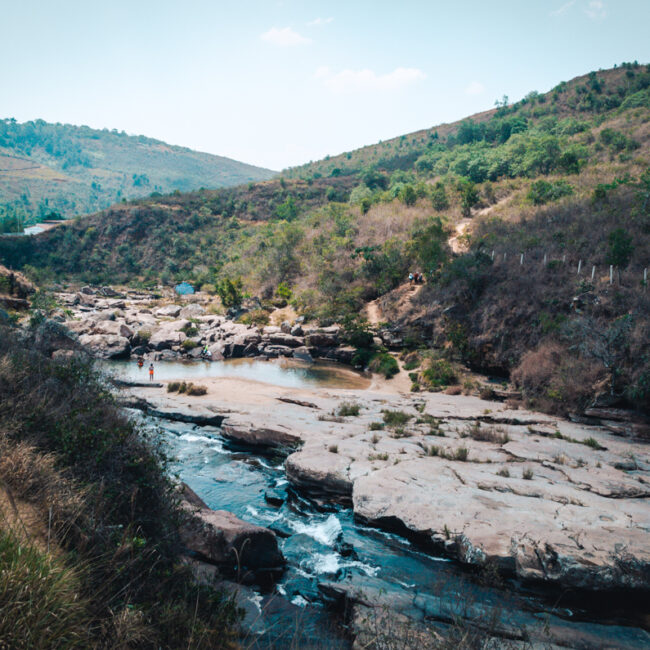
How to Visit the Pescaderito in Curiti (Near San Gil)
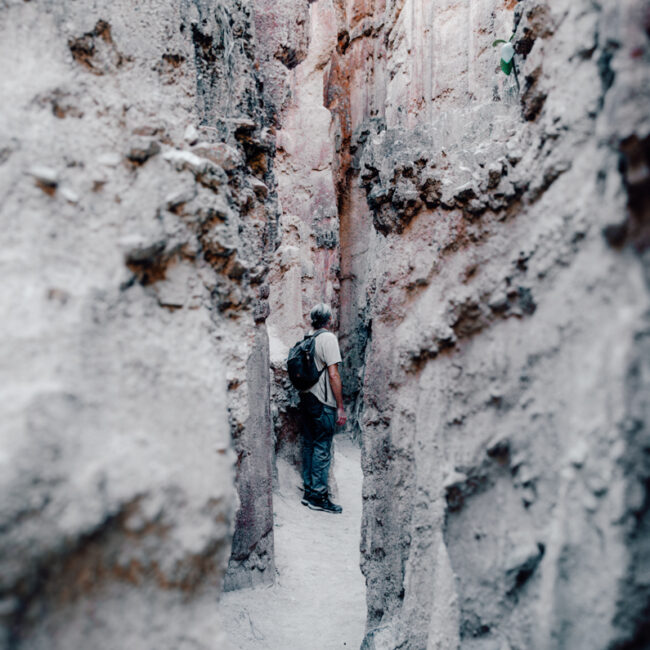
Los Estoraques Unique Natural Area: An Easy Travel Guide
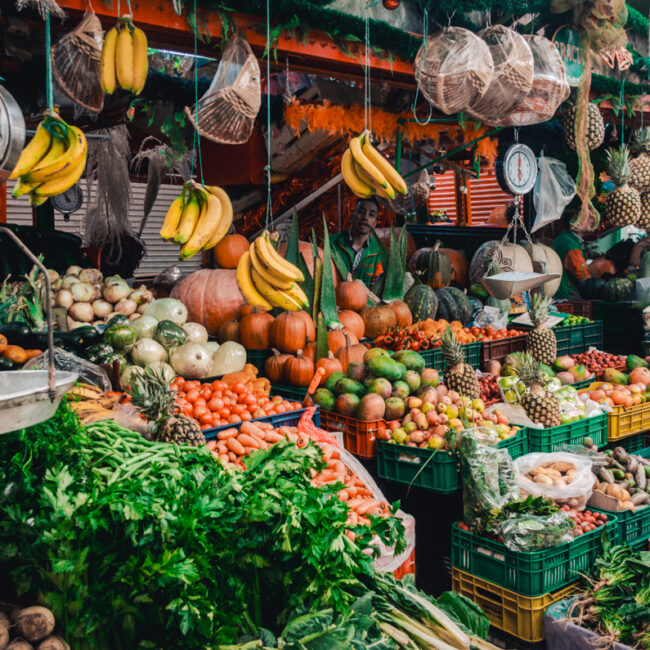
An Easy Guide to Paloquemao Fruit Market in Bogota

Phnom Penh to Kampot: A Complete Transport Guide
Do you want to receive my latest finds on conscious and sustainable travel directly to your inbox? Subscribe here!
© COPYRIGHT TRAVELERS&DREAMERS, 2023.
Lynda
I like the idea of Slow Travel, but I also like joining groups and going on tours. A very large part of me would just love to be a nomad lingering in a town for a few months and then moving on to another destination.
annelies_degelas
Hi Lynda, Yes, that’s the dream right? 🙂 Living a nomadic life moving from one place to next in a slow way! <3 Thanks for your comment! 🙂
Amy
Slow travel gives you a much greater experience of travelling. This is an amazing post to share awareness! Some of the places you’ve been look amazing, especially Borneo 🙂
annelies_degelas
Hi Amy, Borneo is amazing! If you go, surely check out Orou Sapulot for a true local experience and where your money really benefits the locals! <3 Thanks for your comment! 🙂
Shafinah
Definitely quality over quantity. ❤️ ❤️ I used to be all about checking lists and visiting ALL the museums and frankly it was exhausting. I’m so glad I’ve since altered the way I travel and I’m enjoying my days a lot more now
annelies_degelas
I can’t agree more, Shafinah! It’s no use rushing through a country and come home exhausted. Slow is the way to go! <3 Thanks for your comment!
Petsitter Barbara
HEY! I’ve been pet sitting around the world since 2012 and “living like a local.” Who knew I was part of the Slow Travel Movement?!? Good to know! I’ve used Meetup a lot, but didn’t know about Eat With and With Locals. Thanks for the two new great resources!
Himanshu Sisodia
I loved reading your post. I never looked at travel from this perspective, but now slowly changing to becoming an intentional conscious person in all aspects of my lifestyle including travel. Your post really inspires me to choose slow travelling. Thanks for sharing your thoughts.
annelies_degelas
Thank you so much for your kind words! 🙂